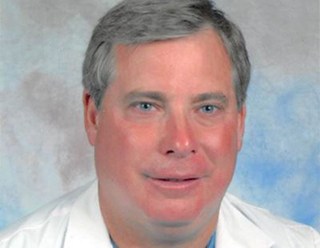


By Dr. John M. Livingston | Special Medical Policy Adviser
Dr. Kenneth Krell’s arguments in his Nov. 27 editorial are old and redundant. They offer no hope for the 20-25,000 people in the Medicaid gap population who are most in need and most vulnerable to events that either result in the changing federal matching formula or increased costs that are the result of underestimating enrollments or a failure of the Idaho Department of Health and Welfare to control costs for those already enrolled.
Further, Dr. Krell is wrong in saying that the cost curve for health care has increased more slowly. The cost for services by providers has increased more slowly, but the cost of insurance to customers has increased faster than prior to the Affordable Care Act (ACA). Who benefits from these increasing insurance margins? Certainly not patients.
I suggest that providers and insurance carriers are benefiting the most from the ACA and this can be seen in the way both sectors are consolidating. Where does the money come from that allows for this type of cronyism and a move toward monopoly?
Dr. Krell’s allegation that one person dies every day because the Idaho has not expanded Medicaid is an allegation without actuarial basis. I could make the same case that because of the ACA’s increasing co-pays and deductibles, people, who buy commercial or subsidized healthcare plans on our Your Health Idaho exchange, are denying themselves access to medical care because of the increased cost of access and therefore more of them are also dying. Both premises are preposterous.
Acutely sick people -- those who die, by the way, are acutely sick before they die -- will continue to have access to emergency care through emergency rooms and acute care clinics. This finding was recently confirmed in the November 2016 New England Journal of Medicine’s continued review of the Oregon Medicaid program enrollment and access and Medicaid morbidity and mortality statistics.
Instead, we should address access and coverage issues for the chronically ill.
Since the ACA was implemented every state in the country has seen Medicaid enrollment increase -- whether a state has those that have expanded and not expanded Medicaid.
In expansion states,the uninsured rate has decreased by 50 percent on average. In the no-expansion states it has decreased by 30 percent. Why has it decreased in the non-expansion states? Because the unemployment rate nationwide has gone down from 9.2 percent to less than 4 percent and people either individually or through their employer can afford to buy health care insurance. I would even suggest that 50 percent of the decrease in the uninsured population in Medicaid expansion states is the direct result of a decrease in unemployment in those states.
In Idaho, 48 percent of our population gets their health insurance from employers -- roughly 600,000 people. Though Idahoans don’t see the increased premiums the employers pay, those ever-increasing costs severely impact employers’ ability to increase wages and bonuses. This is one of the reason wages have been stagnant for so long nationwide. Those people who secure coverage on the individual market see their increased premiums and co-pays and thus have less take-home money to pay for food, clothing, housing and transportation.
These first two groups -- those who receive coverage through work and those who purchase it on the health exchange -- are the ones being asked to pay for the 14 percent of Idahoans on Medicaid with not only their taxes, but their increased premiums and co-pays.
At the same time, these two groups face out-of-network caps of up to $200,000 for seeing providers not in their plans.
Tell these people -- the hardworking Idahoans -- the healthcare cost curve is going down!
Finally, the 18 percent of Idahoans on Medicare, who have contributed a portion of their wages or incomes to the program for their entire working lives, are seeing $760 billion transferred from Medicare to Medicaid -- that was the original number but like everything else with Medicaid expansion the CBO now says that number is over $1.06 trillion through 10 years. For Idahoans on Medicare Advantage Plans they are just this year seeing their costs go up in some cases by 40 percent.
So, let’s concentrate on the chronically ill in the gap population and secure their future healthcare with a private-public partnership not unlike our YHI exchange does for insurance coverage. Let’s stop playing games of actuarial arbitrage, putting their futures at risk and filling the pockets of providers and carriers.
There is much to be done and little time to do it. Sound economic discipline and principles provided by public-private and nonprofit partnerships -- not by increasing government bureaucracies -- will be the way to secure the futures of those who, through no fault of their own, find themselves on the margins.

